Hibiscus, Chinese Hibiscus, Rose of China
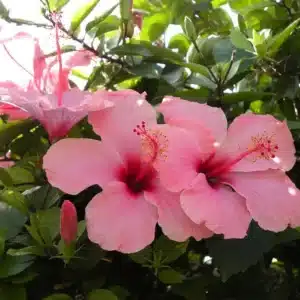
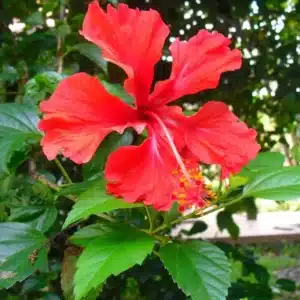
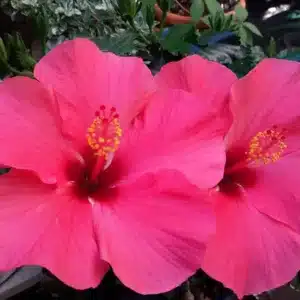
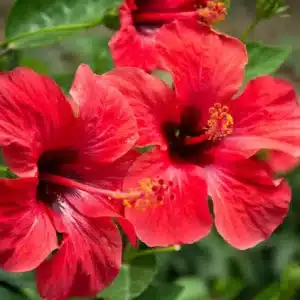
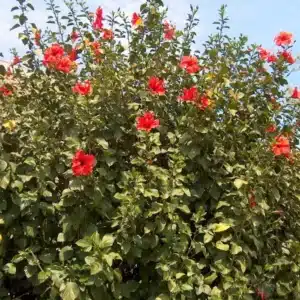
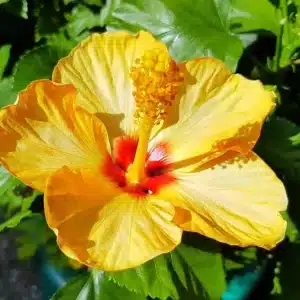
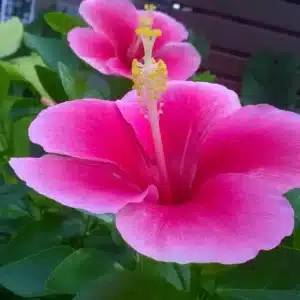
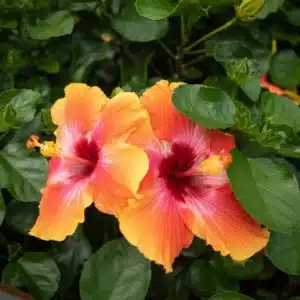
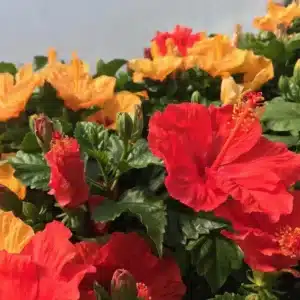
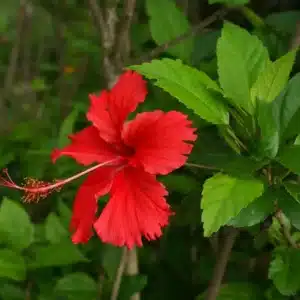
Chinese hibiscus should be located in full sun planted in rich soil with significant proportions of organic matter and good drainage. If planted indoors it should be planted in suitably large containers with a “bright” light exposure. Propagation is most successful by utilizing stem cutting. Chinese hibiscus must not be confused with “Hardy Tropical Hibiscus” which has been developed to return year after year from the root system.
The soil bed containing Chinese hibiscus should never be allowed to dry out especially in hot weather. Chinese hibiscus requires consistent watering and frequent grooming or cleaning away of the spent flowers which are generated on a daily basis. Properly shaped Chinese hibiscus should not require staking. If limbs grow disproportionately they may be trim back to reestablish balance in shape.
Tropical hibiscus plants produce more blooms when they are given regular fertilization. The best fertilizers for use with hibiscus rosa-sinensis varieties have a reduced proportion of phosphorus. A slow-release fertilizer mix such as ’20-10-20′ with a smaller “middle” number is recommended in the winter if the plant is growing actively indoors. Liquid fertilizer with a higher middle number such as ’10-20-10′ has been advocated as a means of increasing flower production during the summer.
Hibiscus require little pruning during the growing season unless they grow too large in which case it may be cut back as needed. The flowers last just one day. The removal of spent flowers is a daily necessity during the growing season. The plant should be pruned by one-half in early spring to maintain the desired shape and to encourage new growth. More frequent and lighter pruning may be needed throughout the year for Hibiscus grown indoors. The plants produce flowers on new wood, therefore pruning during the year will not stop flowering completely but it will delay it.
With the help of beneficial insects and birds, healthy outdoor plants generally can avoid pest infestations. Aphids, thrips, and spider mites may occur which can be treated with a foliar spray utilizing Neem oil. As with all applications of insecticides, one should read the label completely and apply the neem oil spray when bees butterflies, and other beneficial insects are not near the plant. Insecticidal soaps have also been reported as successful it may be more challenging with large plants. Powdery or downy mildew and botrytis may attack the leaves. Fungicidal foliar sprays may be applied while prevention of leaf diseases is best achieved by avoiding watering the plant leaves directly or watering in the early morning to allow the leaves to dry by the effects of sunlight.










